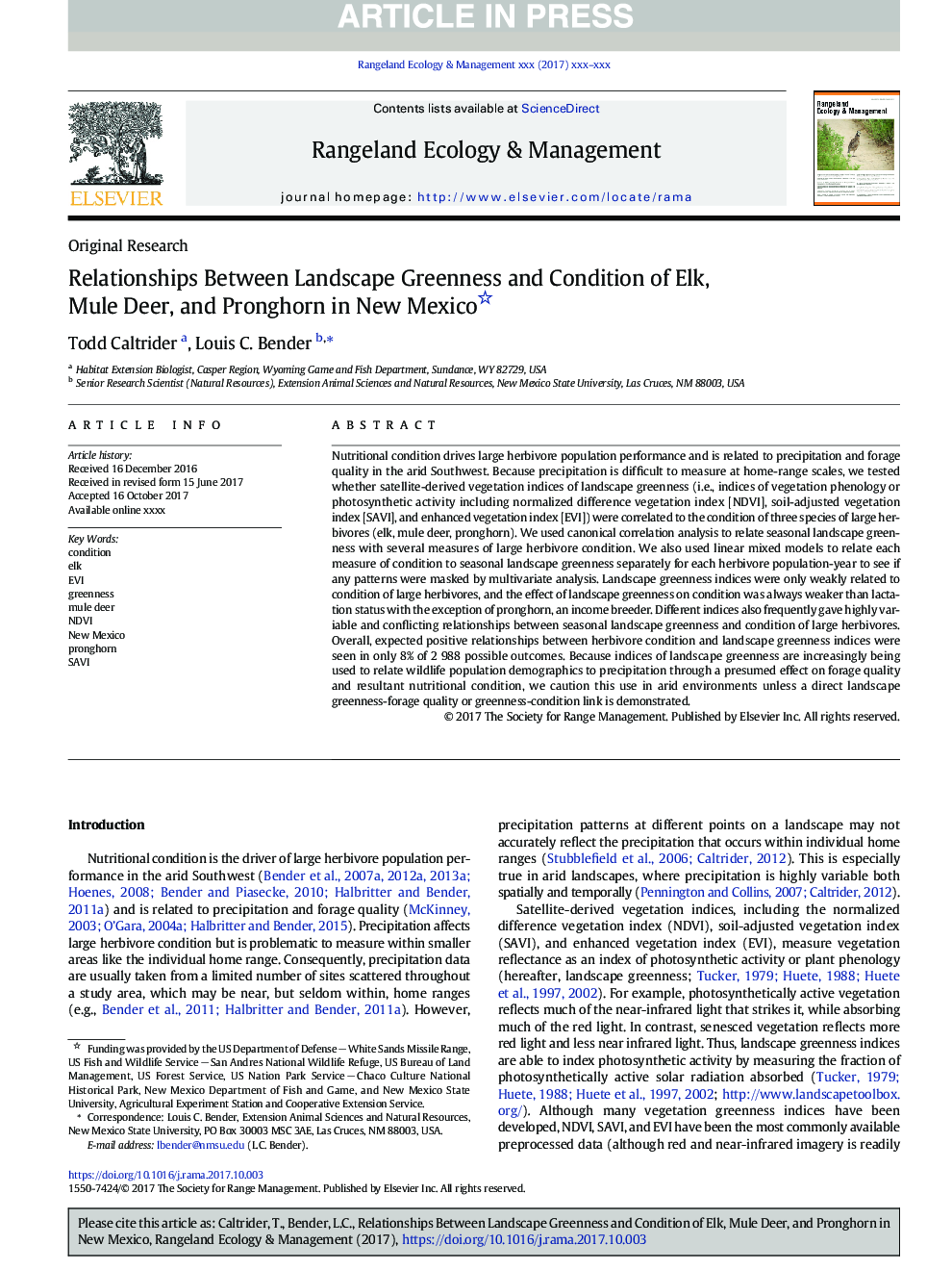| Article ID | Journal | Published Year | Pages | File Type |
|---|---|---|---|---|
| 8849639 | Rangeland Ecology & Management | 2018 | 7 Pages |
Abstract
Nutritional condition drives large herbivore population performance and is related to precipitation and forage quality in the arid Southwest. Because precipitation is difficult to measure at home-range scales, we tested whether satellite-derived vegetation indices of landscape greenness (i.e., indices of vegetation phenology or photosynthetic activity including normalized difference vegetation index [NDVI], soil-adjusted vegetation index [SAVI], and enhanced vegetation index [EVI]) were correlated to the condition of three species of large herbivores (elk, mule deer, pronghorn). We used canonical correlation analysis to relate seasonal landscape greenness with several measures of large herbivore condition. We also used linear mixed models to relate each measure of condition to seasonal landscape greenness separately for each herbivore population-year to see if any patterns were masked by multivariate analysis. Landscape greenness indices were only weakly related to condition of large herbivores, and the effect of landscape greenness on condition was always weaker than lactation status with the exception of pronghorn, an income breeder. Different indices also frequently gave highly variable and conflicting relationships between seasonal landscape greenness and condition of large herbivores. Overall, expected positive relationships between herbivore condition and landscape greenness indices were seen in only 8% of 2 988 possible outcomes. Because indices of landscape greenness are increasingly being used to relate wildlife population demographics to precipitation through a presumed effect on forage quality and resultant nutritional condition, we caution this use in arid environments unless a direct landscape greenness-forage quality or greenness-condition link is demonstrated.
Related Topics
Life Sciences
Agricultural and Biological Sciences
Agricultural and Biological Sciences (General)
Authors
Todd Caltrider, Louis C. Bender,
